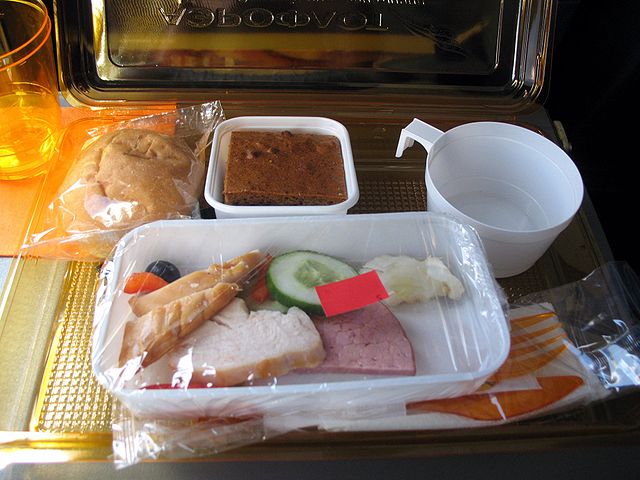Dinner and a Backup Plan

Redundancy and efficiency don’t go well together. We wear belts or suspenders, not and, because having both would be unnecessary and the extra cost or discomfort isn’t worth it. But sometimes, having a backup plan is a good idea, especially when the risk of failure is incredibly high. If you are operating a commercial airline, for example, it makes a lot of sense to have a pilot and a co-pilot, because if something happens to the pilot, you really need someone who can still fly the plane. Even if it ends up costing a little more.
Co-pilots are trained to do everything a pilot can, in case of emergency. But there’s one thing, for most airlines at least, that the co-pilot can’t do. He or she cannot have the same meal as the pilot.
The co-pilot’s job isn’t simply to be the backup plan — he or she assists in takeoffs, landings, and in a variety of in-flight duties, making sure that everything is being done properly and that the safety and best practices checklists are followed. While most modern planes can be piloted by one person if need be, that’s not a great idea, as people make mistakes (and in this case, mistakes can have massive consequences. In November of 2012, for example, the co-pilot of a Lufthansa flight from Newark, New Jersey to Frankfurt, Germany became ill, and an off-duty pilot for another airline, who happened to be a passenger, helped land the plane. (The plane diverted to Dublin, Ireland, due to the co-pilot’s illness.) While the passenger’s skills lessened the potential problem, it isn’t fair to say he prevented a disaster, though; the flight crew could have assisted the pilot sufficiently to land the plane safely — most likely.
It’s rare, however, that both the pilot and co-pilot will become incapacitated, save for something truly nefarious such as a hijacking. One exception? Food poisoning. As recounted by a New York Times article from March of 1984, numerous times, flights were put at risk by contaminated food. In 1982, for example, a flight from Boston to Lisbon had to return to Massachusetts after both the pilot and co-pilot (and six others) fell ill after eating bad tapioca pudding. And in 1975, roughly a third of a 364 person flight going from Tokyo to Paris became ill after eating eggs which contained staphylococcal bacteria. The only reason the pilot and co-pilot didn’t get sick? Their internal clocks were on a different schedule, and instead of eating breakfast, they dined on steak — dinner. The Times article advocated for rules which prevented pilot and co-pilot from sharing meals, something which wasn’t regulated at the time.
But as the BBC reported in 2009, that has mostly changed. That year, a Continental flight from Brussels to Newark made an ultimately safe trip to its destination despite the fact that the pilot died in mid-flight. As the BBC noted in that article, “the main reason for having two pilots is that something like this occasionally happens – though it’s less common for a pilot to die than to be incapacitated by something like food-poisoning.” And because of that concern, today’s airlines, by and large, require that the co-pilot not eat the same meals as the pilot.
Who gets first choice? That’s left unreported, but it wouldn’t be surprising if the head pilot gets that privilege.
Bonus fact: Making good tasting airline food is very difficult for, perhaps, a surprising reason. According to Alaska Airlines’ corporate chef Clifton Lyles (via NPR), at an airplane’s cruising altitude, our taste buds are about 25% less effective than normal. From the article: “as the cabin is pressurized and the humidity inside the plane falls, some of your taste buds go numb, and your sense of smell is diminished, too. Things that tasted great on the ground are now bland and boring.”
From the Archives: Flying Signs: The surprising physics behind the advertising banners airplanes sometimes have in tow.
Related: Astronaut Ice Cream: Kind of like airline food, except awesome.
